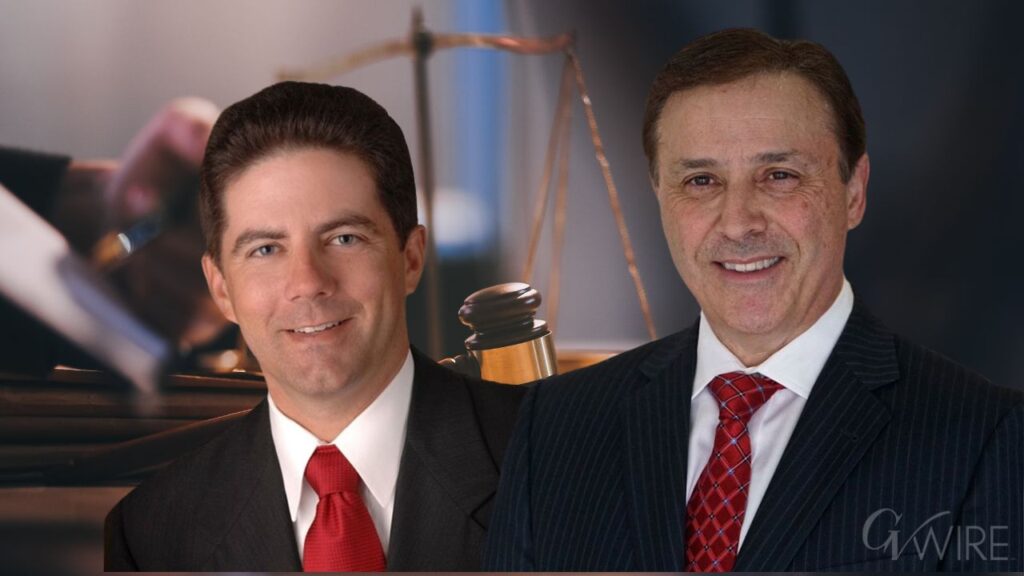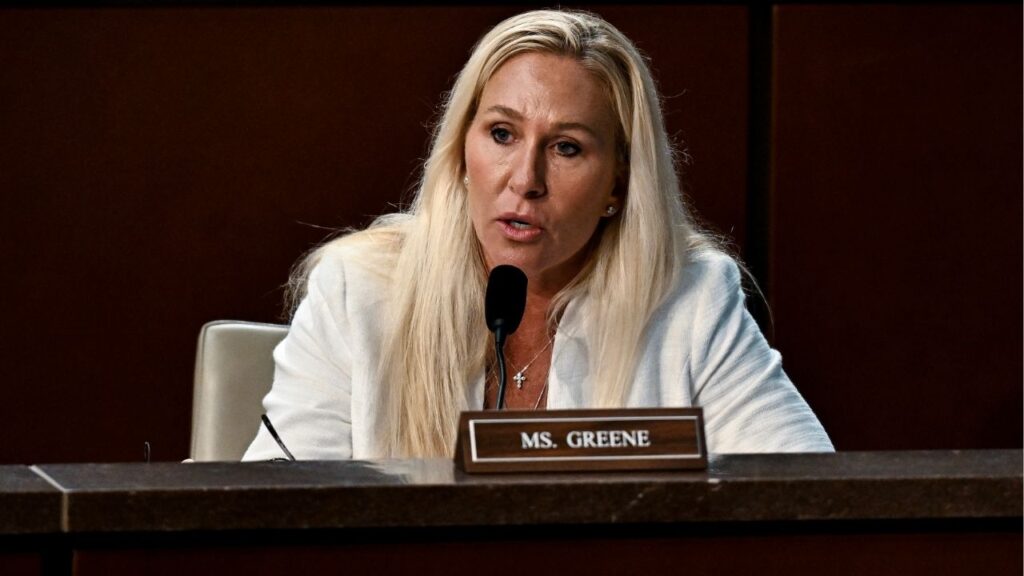Share
CHICAGO — Pardeep Singh Kaleka has surveyed the landscape of an America scarred by mass shootings.
He’s been to Newtown, Connecticut. Charleston, South Carolina. Pittsburgh. “We’ve become kind of a family,” Kaleka says.
It’s true. The unending litany of mass shootings in recent years — the latest, on Friday, leaving 12 dead in Virginia Beach, Virginia — has built an unacknowledged community of heartbreak, touching and warping the lives of untold thousands.
All the survivors, none of them unscathed. The loved ones of the living and dead. Their neighbors, relatives and colleagues. The first responders, the health care workers, the elected officials.
The attacks have changed how America talks, prays and prepares for trouble. Today, the phrases “active shooter” and “shelter in place” need no explanation. A house of worship will have a priest, a rabbi or an imam — and maybe, an armed guard. And more schools are holding “lockdown drills” to prepare students for the possibility of a shooter.
Post-traumatic stress disorder was once largely associated with combat-weary veterans; now some police and firefighters tormented by the memories of the carnage they’ve witnessed are seeking professional help. Healing centers have opened to offer survivors therapy and a place to gather. Support groups of survivors of mass shootings have formed.

Leaders Who’ve Endured These Crises Are Paying It Forward
Mayors, doctors, police and other leaders who’ve endured these crises are paying it forward — offering comfort, mentoring and guidance to the next town that has to wrestle with the nightmare.
Former Oak Creek Mayor Stephen Scaffidi, who’d been on the job just four months at the time of the 2012 Sikh temple attack, remembers a call that night from the mayor of Aurora, Colorado, where 12 people had been fatally shot at a movie theater less than three weeks earlier. “He gave me the best advice I could ever receive in that moment: ‘Be calm. Reassure your community. And only speak to what you know. Don’t speculate, don’t pretend to be an expert on something that you’re not,'” Scaffidi recalls.
Last year, two days after the fatal shooting of 17 students and staff at Marjory Stoneman Douglas High School, Christine Hunschofsky, mayor of Parkland, Florida, met the mother of a 6-year-old killed at Sandy Hook Elementary School who offered a road map into the future.
“She forewarned me of many of the things that we would encounter,” Hunschofsky recalls. “She said at first it will seem like everyone comes together. Then it seems like a tsunami that hits the community. People become very divided. This is all normal after a mass trauma.”
Three months later, it was Hunschofsky’s turn. She sent a message to the incoming mayor of Santa Fe, Texas, where a school shooting left 10 dead. “She told me this is not going to be the hardest day and harder days are coming,” recalls Mayor Jason Tabor. “‘Prepare for that.’ She was 100 percent right.”
The two mayors have since become fast friends and Hunschofsky visited Santa Fe. “We’re bonded for life,” Tabor says.
Studies Offer Hints of Mass Shootings’ Emotional Wallop
Mass shootings account for a tiny percentage of homicides, but their scale sets them apart. In 1999, the Columbine shooting shocked the nation with its unforgettable images of teens running from the school with their hands up — scenes repeated in other similar attacks years later. Today, the public sees and hears about these events as they unfold, through live-streamed video or tweets.
“We’re a desensitized society,” says Jaclyn Schildkraut, a criminologist at the State University of New York at Oswego.
“There is an element of mass shooting fatigue where we’ve gone from ONE MORE,” she says, her voice rising with exasperation, “to add another one to the list. Everybody immediately goes for the gun argument … and maybe throw a little mental health in there, but we really don’t have a consistent, prolonged conversation about these events and how to prevent them.”
Studies have offered some hints of their emotional wallop. The National Center for PTSD estimates 28 percent of people who have witnessed a mass shooting develop post-traumatic stress disorder (PTSD) and about a third develop acute stress disorder.
Laura Wilson, an assistant professor of psychology at the University of Mary Washington in Virginia conducted a meta-analysis — an examination of data from 11 studies of PTSD symptoms among more than 8,000 participants who ranged from those who’d witnessed shootings to those who just lived in the communities in a 20-year period. She found the greater the exposure — someone who was at the scene or who lost a friend or family — the greatest risk of developing PTSD. But, in her work, Wilson has found other factors, too, including previous psychological symptoms and a lack of social support, also played a role in increasing the likelihood.
“Mass shootings are a different type of trauma,” Wilson says. “People are confronted with the idea that bad things can happen to good people. … Most people have a hard time reconciling the idea that a young, innocent person made the good decision to go to school, was sitting there, learning and was murdered. That does not make sense to us. … It just rattles us to our core.”
Affecting Entire Communities in Different Ways
And yet, some people don’t fully appreciate the lasting psychological wounds of those who escaped physical harm.
A study conducted by a University of Nevada-Las Vegas professor after the 2017 Route 91 Harvest Festival shooting that left 58 people dead found PTSD levels for those at the concert remained elevated at least a year later. Most of these people had a friend, family member or co-worker asking — as early as 1½ months after the event — why they were still troubled.
“Almost everyone had someone say, ‘Get over it. Why are you letting this bother you?'” says Stephen Benning, a psychology professor who conducted the research. Those kinds of remarks were associated with increased levels of PTSD, which lasted longer than depression.
April Foreman, a psychologist and board member of the American Association of Suicidology, likens exposure to mass shootings to a flu epidemic that affects the entire community in different ways.
“When we have these mass casualty events it’s like an outbreak of a virus,” she says. “Some people might be immune or not susceptible to that strain. Some people are going to get a little sick, some people are going to be very sick. Some people might have compromised immune systems and if they’re exposed they have a very high risk for life-threatening illness. Suicide is like the extreme outcome.”
In one week in March, two student survivors of the Parkland school shooting killed themselves. Around the same time, the father of a 6-year-old killed girl in Newtown died of an apparent suicide. He had created a foundation in his daughter’s name to support research on violence prevention.

After Parkland Suicides, Many Sought Mental Help for First Time
Austin Eubanks, a Columbine student who was shot and watched his best friend die in the school massacre, died last month, possibly of an overdose. He struggled with opioid use after the attack and later became an addiction recovery speaker. A memorial fund established in his name is seeking funds for a trauma-informed program for families and victims of mass violence.
A similar program, the Resiliency Center of Newtown, is an informal gathering place for those grappling with anxiety, depression and PTSD. Though the school attack occurred 6½ years ago, the center still gets new clients and after every mass shooting, more people stop by.
“Your heart hurts every time a new tragedy happens because you know what those people who are impacted are going to have to go through and what the community is going to go through, and that’s hard,” says Stephanie Cinque, the center’s founder and executive director. “You don’t just get over it and move on.”
In Florida, Orange County Sheriff John Mina, Orlando’s police chief during the 2016 massacre at the Pulse nightclub, realized that when he reached out to law enforcement peers — former chiefs of Aurora and Newtown — afterward. “‘What do you think I should be doing six months, a year from now?” he asked. “They said, ‘John, you’re not going to be dealing with this a year. You’re going to be dealing with this five or 10 years. That was like a punch in the gut.”
First Responders Face Similar Trauma
There were some immediate lessons learned, he says. Among them: improved communications with the fire department and better equipment. After the Pulse shooting, officers were given Kevlar helmets and an extra layer of body armor that will stop rifle rounds.
Mental health debriefings were held six months and a year after the shooting rampage for Orlando officers who went to the nightclub that morning.
Some have reached beyond the department to UCF RESTORES, a clinic at the University of Central Florida that helps trauma victims. It was originally designed to serve the military, but has expanded to include first responders and sexual assault victims, among others.
Deborah Beidel, the clinic’s director, says first responders called to mass shootings face trauma similar to those in combat. About 50 firefighters, police and paramedics who were at Parkland and Pulse have been treated, most in a three-week outpatient program that exposes them to the sounds, smells and sights they encountered that caused their PTSD.
For those inside the Pulse, Beidel says, “the sound of cellphones ringing and ringing and ringing and no one answering them became a trigger for many people. Afterward, any time they heard a cellphone, particularly that Marimba ring on the iPhone, they would have a flashback.”
Beidel says the goal isn’t to make workers forget but to “put that memory in a file where it no longer affects every other aspect of their life, so that they no longer are restricted in what they can do because … of flashbacks or panic or whatever they might be experiencing.”
‘It Gets Put in a File in the Back of Your Head’
Jimmy Reyes, a 35-year-old Orlando firefighter, enrolled in the program about five months after Pulse. He’d been haunted by the memory of tending to more than two dozen bloody, wounded people carried from the club, sprawled over a parking lot, screaming in agony.
After more than four stressful hours caring for the wounded, not knowing who’d live or die, he returned home. As he and his wife watched the TV news, he began sobbing. She held him. “We did the best that we could,” he told her.
Less than a week later, Reyes had a panic attack while working a second job — he was on a safety team in a jet ski race. “I couldn’t breathe,” he says. “I kept telling myself, ‘You’ll be fine. It’ll pass.'” It didn’t. He dreaded another big call at work.
Firefighters, he says, “kind of bury a lot of stuff. It gets put in a file in the back of your head. That’s what I thought this was going to be.”
But it didn’t stay there. He was short-tempered with his family. He had little interest in doing anything but sitting at home. Finally, Reyes decided to seek help.
For three weeks, he relived his experiences, answering questions from a therapist as he told his Pulse story over and over, recalling everything he saw, including one man talking on his cellphone who’d been shot in the head and another critically wounded who asked, “Am I going to die?” At certain points, the therapist would cue up sounds he’d heard — gunshots from inside the club, the wail of the sirens, an explosion.
At first, he says, he cried. By the end of the sessions, he was dry-eyed and calm.
Reyes is better now and remains a firefighter. He never considered quitting. But he’s changed.

After the Shootings, Hospital Brought in Therapy Dogs
“I felt like I was normal before Pulse,” he says. “I was a very happy guy, no problems, no issues with mental health. Now I still deal with depression. I still deal with anxiety. … I look back at those days. … June 11th, I was normal. Then June 12th happened. I’m a completely different person.”
He talks in a rapid-fire, breathless way about the chaos 19 months after the Route 91 shooting. More than 90 severely injured patients in 113 minutes. He repeats that phrase as if it still hasn’t completely sunk in. After 20 years, he’s now a part-time trauma surgeon looking to get out of the operating room completely. MacIntyre enrolled in January in an executive MBA program for doctors, with plans on becoming a consultant for helping hospitals deal with similar challenges. He’s trying meditation, too.
MacIntyre didn’t realize he had PTSD until an MBA program coach picked up on his symptoms — anxiety, stress, short temper, avoidance. His marriage has suffered. His work, too. “I find it very hard to talk to family members and give them bad news … much more so than before,” he says.
After the shootings, his hospital brought in therapy dogs and counselors for the staff but not everyone participated. “As physicians we’re not going to want to show weakness. We’re not going to want to go into an auditorium full of people or get on the floor and pet dogs,” he says. “A lot of physicians internalize. You get to the point where it’s unbearable.”
Refusing to Let a Shooting Dominate His Thoughts
It was different for Brian Murphy. He says he didn’t have any psychological trauma after the shootings at the Sikh temple.
Murphy, the first officer on the scene, was shot 15 times. His face, hands, arms and legs were riddled with bullets. One bullet remains lodged in his skull; another in his throat after slicing one vocal card and paralyzing the other, leaving him with a permanent rasp.
Medically retired from the Oak Creek police department, Murphy completed the master’s degree in criminal justice administration he’d started before he was injured.
He now works for the company that makes the bulletproof vest that stopped three rounds that struck him that August day. He counsels other wounded officers, talking about something deep in his DNA — resiliency.
Murphy gets injections in his throat every three months to stop scar tissue from tightening and has some trouble swallowing, but he has no complaints, noting he was first told he’d never talk or eat on his own. “Once I knew I wasn’t going to die, everything else was butter,” he says.
He credits his family’s support for rebounding. And he refuses to let the shooting dominate his thoughts.
“It’s not like I wake up and say, ‘I can’t believe this happened.’ It’s just life now. I don’t think there’s a tremendous amount of good that comes from looking behind.”



















